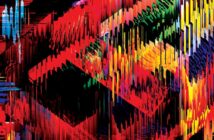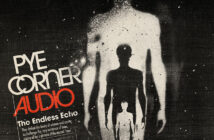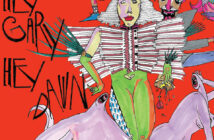
Any awake or advanced readers in the 1990′, specifically in the USA, might have found it difficult to miss the emergence of David Foster Wallace in this long form essay that he co-penned with Mark Costello. Firstly for it gave credence to a musical form, Rap, which hitherto had received little or no attention from literary quarters. And that is exactly what Signifying Rappers contains: the distance of the armchair scrutiniser and a detailed examination schooled in literary, political, psychological and philosophical knowledge. There are moments when Rap is broken down into a form completely about propositional statements; or as the dystopic residue of the broken down dream of Martin Luther King in the years post Ronald Reagan; the mangled extension of the purported yuppie projection of a life of consumerism and the successor to a hermetic social order of punk where the bleakness and nihilism is traded for a hyper materialist aggression and self-assertion.
This 2013 edition of Signifying Rapper contains a preface by Mark Costello, which provides a good deal of back story both to the origins of the essay but also to the character, personality and state of mind of Foster Wallace in the period of writing the book. Emphasised is Wallace’ depressive nature, and the hiding of the suicide attempt preceding 1989 when Foster Wallace shared a house with Costello for the second time. It underpins a lot of the commentary on race and culture in America, about the divisions that were being demolished by a 60′ -70′ liberal American idealism, especially within the “intellectual’ classes. Rap is portrayed as the brutal confrontation with reality versus dream. It is a poetry that is hard-wired into Wallace’ prose that glimpses the beauty within the urban drug and violence that is best encapsulated in Schooly D’ track Signifying Rapper.
When I was 15, having walked out of a cinema after watching Dennis Hopper’s film Colors, straight into a record store to be sold the soundtrack by an attendant (later to be known as a heroin addict and grunge punk keyboard player of some note who progressed into an acid house, then trance musician…) who lured me into buying Schooly D’ Smoke some kill album. It is infectious and grotesque at the same time, inspired, poetic and invites you to both sample the life as well as disdain it. The track Signifying rapper samples Led Zepplin’ Kashmere as later would P. Diddy. Wallace hovers around this track, which is noted as the first gangster rap track, hovers and goes back to it, in between sociological observations, dissections of different genres, descriptions of the working of media and what exactly is white and black rap. Surprisingly Wallace portrays Run DMC as white rap trying to break through the metaphorical and literal race wall in their Walk this Way track. But really they are just running for the cash and no doubt you can tally all the black acts that play to a white American audience race sensibilities in a similar manner. This after all is an American book self conscious of race, division and the cultural sensitivities and forms of boundaries that are in cultural play.
If you read David Toop’ Rap Attack, the reality of the hard ass image portrayed by Schooly D is demolished by his being a “really nice guy’ according to Beastie Boy’ Mike D. Wallace never quite sees through the pretension and the poetic license, he doesn’ see the middle class black kid yearning after street cred and carving an image of the meanest guy on the block so as to demolish Rock “n’ Roll as: “Rock “n’ Roll is a thing of the past so all you long-haired faggots can kiss my ass.’ It’s poetry but not quite as we know it in the Ivy League Mr Wallace and certainly the danger and the boundary crossing and idealism come across in the writing as reasons to appreciate the music. It is summed up by the observation he makes about fear: “And fear requires empathy as much as it does menace or threatâ€. You can read it from the point of view of someone who knows that power is created and maintained by the state by threat of force. Rap in this guise just out anarchists punk music by making the threat and violence to the leafy Arcadian dream real.
Wallace and Costello end Signifying Rapper by quoting from the track Self-Destruction taken from the Stop the Violence ep that was akin to a We are the world moment for the Rap world. It is as much an attempt at a trajectory out of a world described at times as “nightmarish consumerism manque’ or a world where the rapper is Papa Legba, the Blue man, the Yoruba tribe devil/sprite as if a future take on the gambit of Robert Johnson’ road crossing mythos. It’s the same toss of the dice as The Picture of Dorian Grey or Dr Faustus and both Wallace and Costello are well versed in cultural history to be looking for an exit door to this particular storyline. Even if it is just mythos describing character traits, it is enough of the dark shadow of glamor and violence that reels you in and makes you want to run and dance to the tune all the way down that long road.
Innerversitysound



